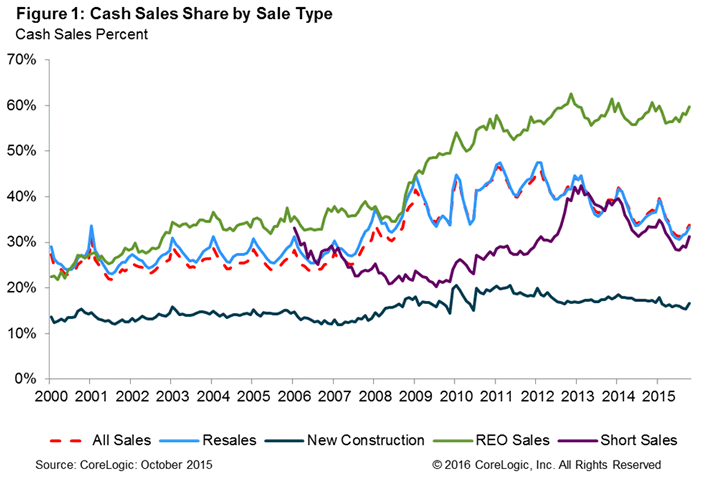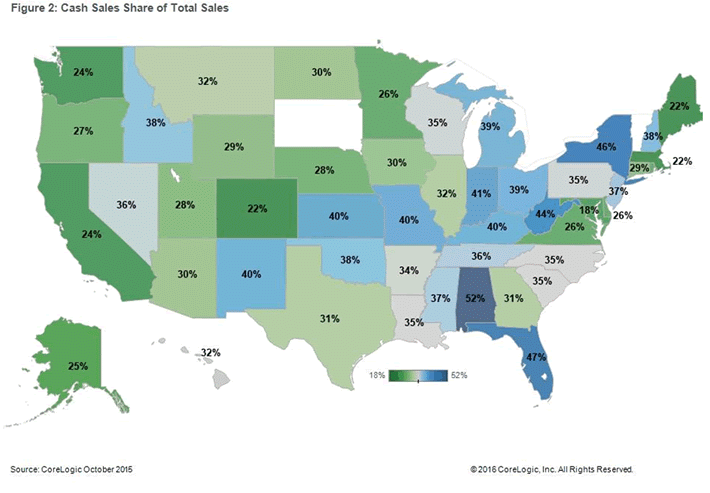The percentage of total home sales transactions that are completed in cash continues to decline on an annual basis as distressed homes become less and less of a market factor. CoreLogic said on Thursday that 33.9 percent of home sales in October were all cash, a 2.6 percent decrease from a year earlier. The cash share did increase by 1.4 percentage points from September to October but CoreLogic said that is normal for an uptick in such sales in October due to the seasonality of the market.
Cash sales are especially significant in sales of owned real estate (REO) and accounted for 59.7 percent of those sales in October. However total REO sales constituted only 7.3 percent of the market. When cash sales were at their peak in January 2011, accounting for 46.6 percent of home sales, REO played a major market role, providing close to a quarter of the homes that sold.

Almost exactly one third of resales were all cash in October and 31.3 percent of short sales. New home sales had the smallest all cash share at 16.7 percent. The percentage of REO sales that are all cash has been consistently over 50 percent since early in the housing crisis while the role of cash in resales has been trending down since 2012. The cash share of resales and short sales have almost perfectly mirrored each other since 2013.

The highest percentage of cash sales in October was in Alabama, accounting for 51.7 percent of transactions. Second was Florida at 46.7 percent followed by New York (46.3 percent) and West Virginia (44.4 percent). Of the nation's largest 100 Core Based Statistical Areas (CBSAs) measured by population, Miami-Miami Beach had the highest cash sales share at 51.6 percent, followed by West Palm Beach-Boca Raton (50.9 percent), Detroit, Mich. (50 percent), Fort Lauderdale (49 percent) and Philadelphia, Pa. (48.9 percent).
Prior to the housing crisis, the cash sales share of total home sales averaged approximately 25 percent. CoreLogic says if the share of cash sales share continues to fall at the same rate it did in October 2015, it should return to the pre-crisis level mid-2018.







